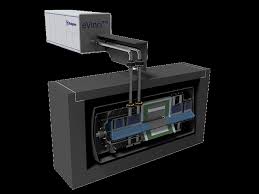Nuclear Reactors 646 - Westinghouse Working On EVinci Microreactor
eVinci.jpg

Westinghouse has made a lot of money in the international nuclear market for big conventional nuclear power reactors that product a gigawatt or more of electricity. Currently, the nuclear industry is promoting what are called small modular reactors which produce three hundred megawatts or less of electricity. Small, decentralized energy sources have surpassed big power plants in new installation connecting to the national electrical grid.
Westinghouse is jumping on the new trend with something they are calling an “eVinci” microreactor. In June, the Westinghouse eVinci microreactor design got a five-million dollar grant from the U.S. Department of Energy. The new microreactor will be small enough to put on the bed of a truck. The eVinci would act like a nuclear battery. Once installed, it should work for ten years without needed to be refueled.
Westinghouse considered the designs for nuclear reactors used space probes when they designed the eVinci. Arafat said that they are “probably the only nuclear reactor concept that run autonomously, without any operators.” New materials will have to be developed to cope with temperatures up to eleven hundred degrees Fahrenheit. This is almost twice the temperature inside a conventional power reactor.
Yasir Arafat is Westinghouse’s technical lead for eVinci. Last September, Arafat talked about the eVinci design at a microgrid conference at Eaton’s Experience Center. He said the grand vision of Westinghouse was to be able to plug an eVinci microreactor into any microgrid in the world.
Arafat said that the eVinci can recycle nuclear fuel three or four times. The eVinci will be built in a factory and transported by truck or train to the installation site. Arafat claims that it should only take about a week to install an eVinci. Westinghouse says that they anticipate the use of eVinci at remote military bases, remote civilian communities, industrial mines and oil drilling sites. They hope to begin commercial operations in 2024 but have been accused in the past of being overly optimistic in their time and cost estimations.
Rita Baranwal is a former Westinghouse executive who is now heading up the DoE’s nuclear research. She was nominated to be the new assistant secretary for nuclear energy at the DoE. During her Senate confirmation hearing this October, she said that one of her priorities would be to work with the U.S. Department of Defense (DoD) on deploying advanced reactors for military needs.
John Kotek is the vice president of policy development and government affairs at the Nuclear Energy Institute (NEI) which is a nuclear industry lobbying group in Washington, D.C. Kotek said “It’s going to be essential for the federal government to keep providing support (for SMRs).” There are at least six companies working on their own SMRs and looking to the federal government for help.
The DoD has expressed an interest in microreactors. Kotek said that such an interest on the part of the huge federal agency could act as a “demand signal” to stimulate the development of the supply chain that will be required in order for microreactors to be manufactured and deployed.